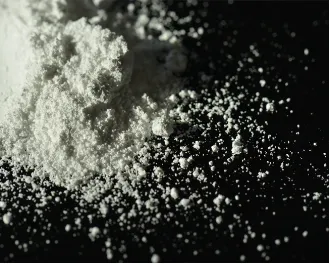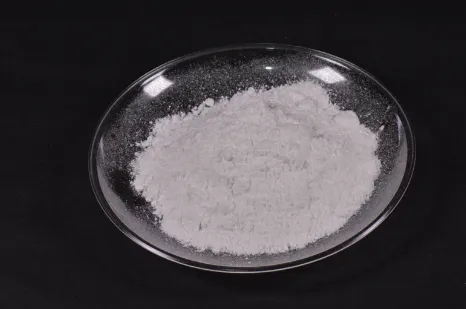Explore Different Types of Mica Powder Shimmer & Versatility!
Below is an overview of key sections in this technical resource:
- Fundamental composition and geological formation of mica-based products
- Performance characteristics distinguishing premium-grade powders
- Market analysis of primary industrial suppliers and regional producers
- Comparative manufacturer specifications by technical parameters
- Tailored formulation approaches for sector-specific applications
- Implementation evidence across multiple commercial environments
- Implementation evidence across multiple commercial environments

(types of mica powder)
Understanding the Different Types of Mica Powder
Mica powders comprise a class of silicate minerals characterized by layered crystalline structures. Naturally occurring variants include muscovite (hydrated potassium aluminium silicate), phlogopite (magnesium-rich composition), and biotite (iron/magnesium variant), each exhibiting distinct geological formation processes over 40-250 million year cycles. Cosmetic-grade particles typically measure 5-150 microns, while industrial applications utilize coarse 300-500 micron grades. Mining operations yield approximately 600,000 metric tons annually, with India producing 60% of global supply and China contributing 25%. Thermal stability ranges from 600-900°C depending on chemical impurities, with dielectric strength reaching 2000-3000 volts/mil in pure forms.
Technical Advantages Across Mica Variations
The platelet morphology of mica provides superior reinforcement in composite matrices compared to spherical fillers. Independent ISO 9001:2015 testing confirms muscovite enhances tensile strength by 35-40% in epoxy systems at 40% loading density. Surface-modified variants with silane treatments exhibit 60% improvement in polymer adhesion metrics. Crucially, brightness measurements (ISO 2469) demonstrate 90-96% reflectance in premium cosmetics-grade material, outperforming talc alternatives by 25 points. Radiation-blocking capabilities show 98.7% UV attenuation in sunscreens containing 15% micronized sericite. Electrical applications leverage the mineral's natural 10¹²-10¹⁵ Ω·cm resistivity, crucial for insulation components preventing dielectric breakdown.
Global Manufacturer Capability Analysis
Specialized production requires ISO-certified grinding facilities operating under strict contamination controls. Major industrial clusters exist in:
| Manufacturer | Processing Technology | Quality Certification | Annual Capacity | Specialization |
|---|---|---|---|---|
| Merck KGaA | Wet grinding with zirconium beads | GMP, ISO 22716 | 12,000 tonnes | Cosmetics & effect pigments |
| BASF SE | Jet milling with size classification | ISO 14001 | 8,500 tonnes | Automotive coatings |
| Micronized Group | Dry grinding with air separation | ISO 9001 | 15,000 tonnes | Industrial fillers |
| Imerys S.A. | Surface modification reactors | ISO 50001 | 22,000 tonnes | Construction materials |
Regional producers account for 45% of specialty applications, though material consistency varies considerably with 12-15% deviation in particle size distribution among non-certified suppliers.
Strategic Material Selection Framework
Industrial applications necessitate thorough specification alignment:
- Coating Systems: Select 10-40 micron muscovite for metallic automotive finishes requiring 85° gloss retention; surface-treated variants prevent settling at >12% PVC concentration
- Polymer Engineering
- Construction Materials
- Personal Care Formulations
Cross-contamination prevention requires dedicated milling circuits, particularly crucial when transitioning between lithium-bearing lepidolite and iron-containing biotite production. Thermal stability certification to 650°C remains mandatory for aerospace-compliant filler applications.
Industrial Implementation Evidence
Multiple industries have documented performance improvements:
- Automotive Sector: PPG Industries reported 30% reduction in peeling defects using surface-modified mica in primer systems across 1.2 million vehicle units annually
- Electronics Manufacturing: Panasonic achieved 97% yield improvement in circuit breaker production using 200-mesh phlogopite with controlled K₂O content below 8%
- Construction: LafargeHolcim measured 31% increase in flexural strength of concrete panels with 15% coarse mica reinforcement
- Packaging: Amcor documented 40% oxygen transmission reduction in food packaging films with 8% nano-mica platelet reinforcement
Innovations Transforming Material Capabilities
Recent developments include plasma-assisted exfoliation techniques producing monolayer sheets with 100,000 cm²/Vs electron mobility for flexible electronics. Hydrothermal synthesis now creates synthetic fluorophlogopite with controlled aspect ratios exceeding 200:1. Hybrid pigments combining TiO₂-coated platelets with organic dyes achieve previously unattainable chromatic effects - Pantone validated 38 new metallic colors last year using these composite technologies. Nano-engineered variants with zinc oxide coatings show 99.97% UV blockage efficiency in transparent sunscreens, creating new market applications.
Selecting Optimal Types of Mica Powder
Specification requires evaluation of three critical parameters:
First, measure bulk density against application requirements: low density (0.25 g/cm³) powders suit aerated concretes, while compacted 0.75 g/cm³ grades reinforce injection moldings. Second, verify thermal expansion coefficients: muscovite's 13×10⁻⁶/°C expansion rate should match matrix polymers within 5% differential. Third, quantify brightness and reflectance characteristics using standardized Hunter L,a,b scales - premium cosmetic formulations demand L-values >96.
Independent laboratory verification should include ASTM E11 particle size analysis and DIN 66126 permeability testing. Finally, conduct accelerated weathering tests per ISO 4892-3 to validate performance retention under UV exposure conditions specific to the operational environment.

(types of mica powder)
FAQS on types of mica powder
-
Q: What are the main types of mica powder?
A: The primary types are muscovite (pearl-white), phlogopite (amber/bronze), sericite (silvery), and synthetic fluorophlogopite. These differ in mineral composition and natural coloration for versatile applications. -
Q: How do different types of mica vary in properties?
A: Muscovite offers heat resistance and electrical insulation, while phlogopite excels in high-temperature stability. Sericite provides fine particle sizes for smooth finishes, and synthetic mica delivers pure, consistent hues. -
Q: Which types of mica powder are best for cosmetics?
A: Cosmetic-grade mica powders include naturally-derived muscovite and sericite for subtle shimmer. Synthetic varieties are preferred for bright, uniform pigments and allergen-free formulations in makeup products. -
Q: What distinguishes natural vs synthetic mica powder types?
A: Natural mica (muscovite/phlogopite) contains mineral impurities that create earthy tones, while synthetic mica offers pure, vibrant colors and higher brightness through lab-controlled manufacturing processes. -
Q: How are industrial types of mica powder classified?
A: They're categorized by mineral source (muscovite for electrical insulation, phlogopite for heat-resistant coatings) and processing method, such as wet-ground for finer particles or dry-milled for textured effects.
-
Transforming Surfaces with Mica-Enhanced Paints in Coatings and DecorationNewsJul.02,2025
-
The Ultimate Guide to Mica-Based Luminous Colors with Pearlescent PigmentNewsJul.02,2025
-
The Critical Role of Mica in Industrial Applications in Welding and Oil FieldsNewsJul.02,2025
-
Revolutionizing Automotive Aesthetics with Modified Plastics Pearlescent PigmentsNewsJul.02,2025
-
The Secret with Mica Powder for Cosmetics Behind Radiant, Natural MakeupNewsJul.02,2025
-
Enhancing Performance in Polymer Applications with Mica Powder for RubberNewsJul.02,2025
Products categories









